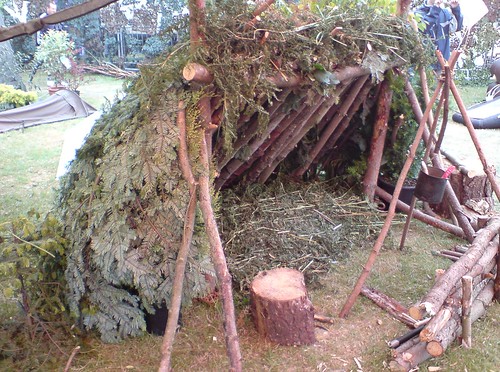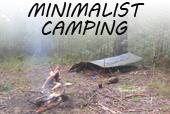There are many types of survival shelters, but they mostly serve one basic purpose, and it isn’t to have an attractive home for the night. There might be some psychological value to certain styles, and there may ocassionally be a need for protection from animals, but the primary purpose of a survival shelter is to keep you from losing body heat.
Hypothermia (loss of body heat) is the single biggest cause of death in a survival situation. A shelter prevents this in the following ways:
1. It blocks the wind.
2. It keeps you dry.
3. It creates a space that can be heated by your body heat itself, or with a fire or other means.
Sometimes people with no skills survive in circumstances where others with survival knowledge have died. Why? Often it is because they have knowledge or intuition of the principles involved in survival. It can be a great help to know how to build a lean-to shelter using natural materials, but it is also possible that a lost hiker with no skills might be more likely to survive by burying himself for the night in a pile of dry leaves. He might simply recognize that it is easier for his body to heat the space under those leaves.

In other words, a little understanding of the principles involved and a willingness to think is more important than specific skills. Of course, best of all would be thinking, understanding and having the specific knowledge and skills to build various survival shelters.
Survival Shelters
Start by looking at what is available, and considering how you can use it. To block the wind, you can look for a rock to get behind. A large downed tree might also help. A snow cave is great for keeping out the wind. A wall of snow blocks can keep the wind from getting into your tent. Locating your camp site in the right place makes all the difference in how much wind you are exposed to.
If rain or snow is likely, a shelter that can keep you dry becomes very important. Again, look around and think of how anything and everything can be used. A broken canoe, for example, might be worthless for getting you down the river, but it still could be used as a shelter, or a roof for a shelter. Garbage bags and any other plastic in your backpack might be used for roofing materials. The right cave or overhanging ledge can be a great way to get out of the rain.
Think of all the materials around you in terms of how waterproof they are, and how you can use them. Large pieces of birch bark can be pulled from rotten logs, for example, and layered over a lean-to like shingles to keep the rain out. Other tree bark may work as well. Cardboard, pieces of a plane, and large leaves can be used as roofing materials.
Be careful about getting wet from below as well. A snow cave or shelter made of snow blocks will keep the snow from falling on you, but you can get soaked from the snow underneath. In these cases, and when the ground is wet, make a floor of plastic or grass or evergreen branches. If you have limited materials, sleep sitting up to decrease the amount of your body that is exposed to the wet and cold floor.
The amount of space you create with your survival shelter is crucial if it is cold at night. Too big and the temperature inside will be the same as outside. You want a small enough space that your body heat or candle or small fire will be able to heat it. Sleeping in a pile of dry grass with a plastic sheet spread over it, for example, is more likely to keep you warm than a large lean-to with a fire in front of it.
Finally, mix and match the various styles of shelters you have seen or heard of. Think about what you have and get creative. The snow may not be suitable for an igloo, for example, but a lean-to made of evergreen boughs could be covered with crusty pieces of snow for extra insulation. A brush-shelter could be build inside a cave, to have rain protection while reducing the space you need to heat. The ultimate in survival shelters is whatever works for your situation.












